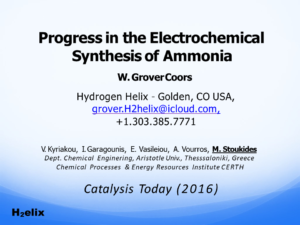Presentation
Combustion characteristics of ammonia/air flames for a model swirl burner and an actual gas turbine combustor
Ammonia is expected not only as hydrogen energy carrier but also as carbon free fuel. For an industrial use of ammonia combustor, ammonia flame stabilized on a swirl combustor should be clarified. However, in order to realize an ammonia-fueled combustor, there are some issues to be solved, such as a difficulty of flame stabilization and reductions of NOx and ammonia emission. In this study, stabilization and emission characteristics of ammonia / air flames stabilized by a model swirl burner are investigated. The outer and inner diameters of the swirler are 24 mm and 14 mm, respectively, and the swirl number…





